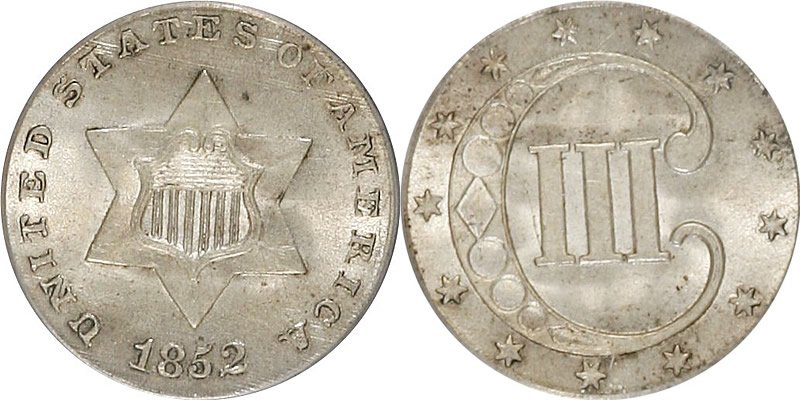The US Silver Three Cent Piece, also known as the Three-Cent Silver, was a coin that was produced by the United States Mint from 1851 to 1873. It was the smallest denomination silver coin ever minted by the US government and was primarily used for transactions such as buying postage stamps or newspapers.
The coin was originally authorized by the Act of February 21, 1851, and was first minted in 1851. The coin weighed 0.8 grams and was made of 75% silver and 25% copper. It had a diameter of 14.1 mm and featured a design created by James B. Longacre, who was the Chief Engraver of the US Mint at the time.
The obverse side of the coin featured a depiction of the goddess Liberty, wearing a coronet with the word “LIBERTY” inscribed on it. She also held a pole with a cap on top, which was a symbol of freedom. The reverse side of the coin featured the Roman numeral III, surrounded by a wreath of laurel leaves and the words “UNITED STATES OF AMERICA” and “3 CENTS.”
The Three-Cent Silver coin was introduced in response to a shortage of silver coins in circulation, as well as a need for smaller denominations for everyday transactions. It quickly became popular among the public, especially with the rise of the postal service, which charged three cents for a letter. The coin was also used by merchants for small transactions and as change for larger purchases.
However, the coin’s popularity was short-lived. By the mid-1860s, the Civil War had caused a significant rise in the price of silver, making the coin’s intrinsic value worth more than its face value. This led to hoarding and melting of the coins, which further reduced their availability in circulation. In 1873, the coin was officially discontinued by the Coinage Act, and it was replaced by the nickel three-cent piece.
Today, the US Silver Three Cent Piece is a popular item among coin collectors, due to its unique design and historical significance. While it may not have had a long lifespan in circulation, it remains an important part of American numismatic history and a testament to the ingenuity of the US Mint in responding to the needs of the public.
